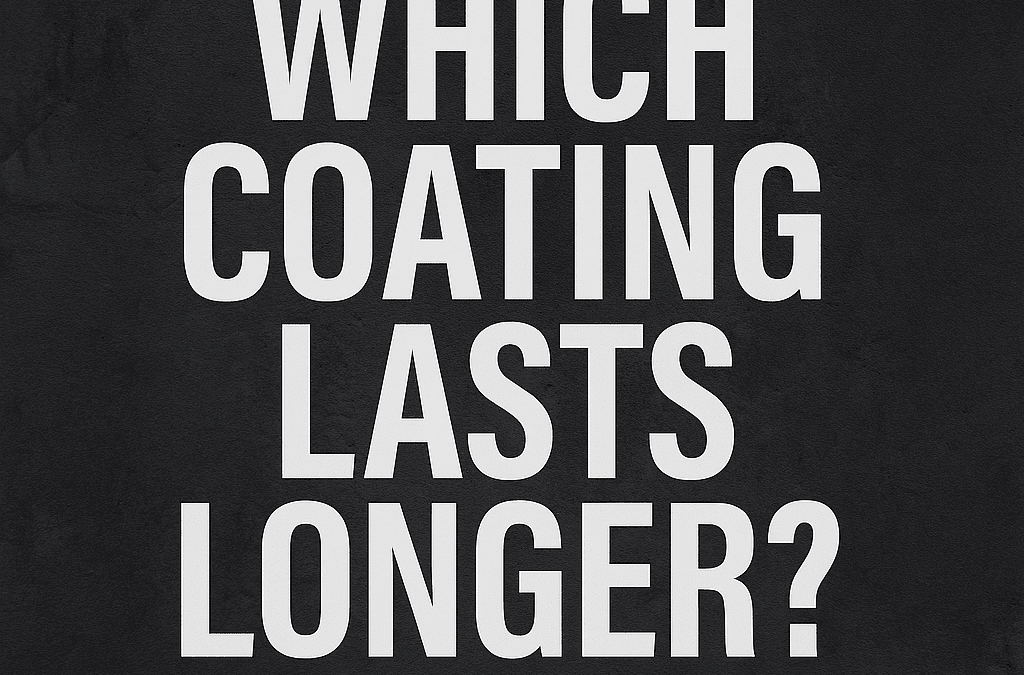Industrial tanks, containment systems, and structural assets take a beating—chemicals, moisture, abrasion, impact, UV exposure, and constant operational stress all break down protective coatings over time. When infrastructure fails, production slows, maintenance costs spike, and compliance risks increase. That’s why coating selection matters. And in today’s industrial environment, the conversation almost always comes down to Polyurea vs Epoxy.
Both are widely used. Both have benefits. But when it comes to long-term durability, lifecycle cost, and real-world protection, the clear winner for most industrial environments is polyurea.
Why This Comparison Matters for Facility Owners and Operators
Coatings are not just surface finishes—they are asset protection systems. Choosing the wrong coating can result in:
- Premature coating failure
- Costly shutdowns
- Corrosion damage
- Environmental exposure
- SPCC or compliance issues
- Unnecessary tank replacement
Most decision-makers are really asking one core question:
“Which coating will protect my asset the longest with the least maintenance and downtime?”
Let’s break it down.
Polyurea: Fast, Flexible, and Extremely Durable
Polyurea is a spray-applied elastomer that forms a seamless, monolithic membrane. It is chemically resistant, highly elastic, and cures in seconds—even across a wide range of temperatures and humidity. Because it bonds tightly to steel, concrete, and fiberglass, it is one of the most durable industrial coating options on the market.
Polyurea Advantages:
- Cures in seconds (rapid return-to-service)
- Exceptional flexibility and crack-bridging
- Seamless, pinhole-free membrane
- Chemical, corrosion, and abrasion resistance
- Performs in extreme temperatures
- Long service life with reduced maintenance
- Ideal for tanks, containment, roofing, and wastewater structures
Epoxy: Strong, But Limited by Rigidity and Cure Time
Epoxy has been a workhorse coating for decades, and it has its place—especially in controlled environments. It forms a very hard film and can withstand many chemical exposures.
Epoxy Advantages:
- Hard, durable surface
- Good chemical resistance (in select environments)
- Lower upfront material cost
- Common and familiar to engineers
Epoxy Drawbacks:
- Long cure time (days, not seconds)
- Brittle and prone to cracking
- Poor flexibility (fails with substrate movement)
- Higher long-term maintenance cost
- Vulnerable in dynamic or high-stress environments
Head-to-Head Comparison (Polyurea vs Epoxy)
| Performance Category | Polyurea | Epoxy |
| Cure Time | Seconds | Days |
| Flexibility | High | Low |
| Crack Resistance | Excellent | Moderate to Poor |
| Chemical Resistance | Excellent | Good (situational) |
| Abrasion Resistance | Excellent | Good |
| Long-Term Maintenance | Low | High |
| Lifecycle Cost | Lower | Higher |
Real-World Impact: Downtime
If your coating requires days of curing, your system is out of service. That means:
- Lost productivity
- Extended shutdown windows
- Delayed operations
Polyurea cures in seconds, which drastically reduces downtime. For facilities that can’t afford prolonged shutdowns, this is a game-changing advantage.
When Epoxy Still Makes Sense
Even though polyurea is superior in most industrial environments, epoxy can still be a reasonable choice when:
- The environment is stable and predictable
- Budget is the primary decision factor
- Flexibility is not required
- Downtime is not a concern
But for tanks, containment, wastewater, roofing, or any surface exposed to real-world stress, epoxy simply cannot match polyurea’s lifecycle performance.
Why Polyurea Wins for Industrial Applications
At the end of the day, epoxy is a coating, while polyurea is a high-performance protective membrane. That difference is why polyurea offers:
- Longer service life
- Stronger protection
- Better ROI
- Fewer failures
- Less maintenance
- Faster project turnaround
This is why polyurea has become the go-to choice for facilities that demand maximum uptime and long-term durability.
FAQ: Polyurea vs Epoxy
Q: Is polyurea more expensive than epoxy?
A:Upfront—sometimes yes. Over the lifecycle—polyurea is typically cheaper due to fewer failures and less maintenance.
Q: Can polyurea handle aggressive chemicals?
A:Yes. Polyurea excels in chemical, wastewater, and harsh industrial environments.
Q: Will epoxy crack over time?
A:Epoxy can become rigid and brittle, especially on concrete or moving substrates. Polyurea flexes and absorbs stress.
Final Takeaway & CTA
If uptime, durability, and lifecycle protection matter, polyurea is the superior long-term choice. For tanks, containment, roofs, wastewater structures, and high-demand environments, there is simply no comparison.
Protect your infrastructure with a seamless polyurea system.


